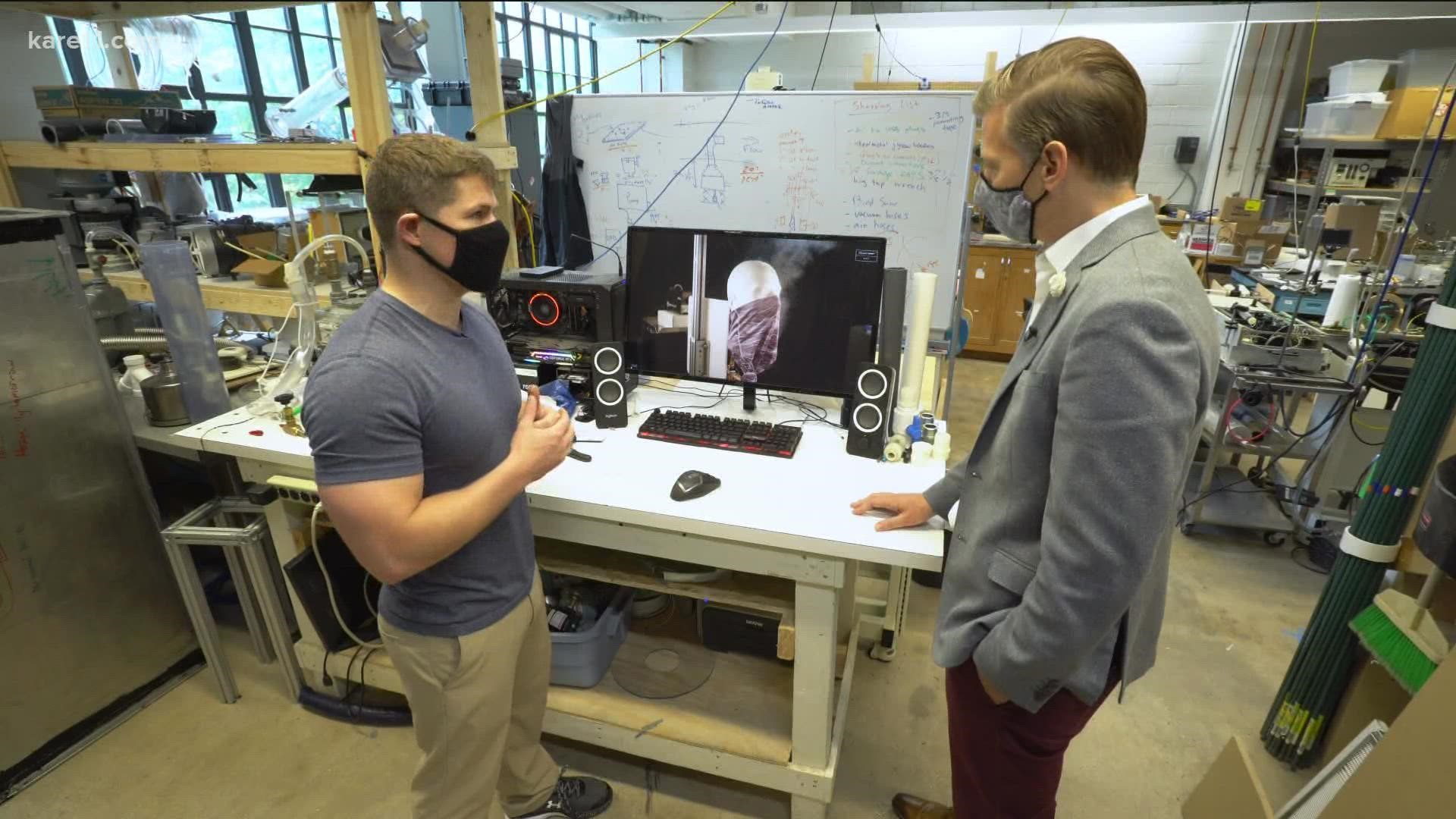MINNEAPOLIS — While many employers have suspended their return to office plans in response to the surge of the COVID-19 delta variant, not everyone can avoid the added risk.
So how do you help protect yourself at work? Chris Hogan, an aerosol scientist and professor at the University of Minnesota, said you shouldn't look to those plastic barriers for much help.
"The dividers are... sneeze guards," Hogan said. "A decent proxy for it is when we used to have smoking and non-smoking sections in restaurants. There would be the occasional restaurant that would do this with a divider, and you knew that you could smell smoke in the non-smoking section if you were right next to it."
Even if you surrounded yourself with Plexiglass, like Vikings quarterback Kirk Cousins recently suggested, Hogan says the benefit would be minimal depending on your job. He says dividers make sense at checkout counters and other places where you have brief, face-to-face interactions with customers, but not in offices where COVID aerosols have time to hang around.
So what does help? Hogan says cloth masks and distancing do wonders to control COVID at the source and during interactions that last just a few minutes. But if you're working at a desk for long periods near other people, he says it's a good idea to learn about your ventilation system.
Chris Hogan: "One of the things that you can ask about is the air changes per hour, ACH, in the office space where you work," Hogan said. "This is the number of times per hour that the air in that space is kind of swept out and replaced. They often aim for an ACH of around four in modern offices. More in bathrooms and higher in lunch rooms."
Kent Erdahl: "So four times an hour would be a good baseline?"
Hogan: "Yeah, four or higher. There's no such thing as too high here, so higher is better."
He says it's harder to ask about air filters, because their effectiveness often depends on the amount of air your building's system can push through it efficiently.
One technology gaining more popularity in buildings involves UV lights that help inactivate viruses. Hogan says he's tested some and found them to be effective.
"We did a study of what's called in-duct UV-C light, inside a duct, and you would pass airflow through," he said. "Only one out of every 10,000 viruses that went in, was still infectious at the outlet."
Though the UV-C systems are now becoming more common, he said they can be quite large and might be cost prohibitive for some to install.
Regardless, he says there are two very low-tech strategies that every office can consider.
"First, I'd say, how can we reduce occupancy to be half of what it originally was?" Hogan said. "The other thing is, when the weather is like it is right now, open the windows. You want that air change rate to go up, open the windows. It goes way up, and we all know that because you feel it."
By far, Hogan says the number one way to limit your exposure at the office is by limiting your exposure TO the office. He says work remotely if, and when, you can. If you need to be there, try to limit close contacts with others.

